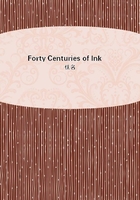
第103章
They compose, with the algae and lichens, the class of thallogens (Lindley), the algae existing in water, the other two in air only. A fungus is a cellular flowerless plant, fructifying solely by spores, by which it is propagated, and the methods of attachment of which are singularly various and beautiful. The fungi differs from the lichens and algae in deriving their nourishment from the substances on which they grow, instead of from the media in which they live. They contain a larger quantity of nitrogen in their constitution than vegetables generally do, and the substance called 'fungine' has a near resemblance to animal matter.
Their spores are inconceivably numerous and minute, and are diffused very widely, developing themselves wherever they find organic matter in a fit state. The principal conditions required for their growth are moisture, heat, and the presence of oxygen and electricity. No decomposition or development of fungi takes place in dry organic matter, a fact illustrated by the high state of preservation in which timber has been found after the lapse of centuries, as well as by the condition of mummy-cases, bandages, etc., kept dry in the hot climate of Egypt. Decay will not take place in a temperature below that of the freezing point of water, nor without oxygen, by excluding which, is contained in the air, meat and vegetables may be kept fresh and sweet for many years.
"The action which takes place when moist vegetable substances are exposed to oxygen is that of slow combustion ('eremacausis'), the oxygen uniting with the wood and liberating a volume of carbonic acid equal to itself, and another portion combining with the hydrogen of the wood to form water. Decomposition takes place on contact with a body already undergoing the same change, in the same manner that yeast causes fermentation. Animal matter enters into combination with oxygen in precisely the same way as vegetable matter, but as, in addition to carbon and hydrogen, it contains nitrogen, the products of the eremacausis are more numerous, being carbon and nitrate of ammonia, carburetted and sulphuretted hydrogen, and water, and these ammoniacal salts greatly favor the growth of fungi. Now paper consists essentially of woody fibre, having animal matter as size on its surface.
The first microscopic symptom of decay in paper is irregularity of surface, with a slight change of color, indicating the commencement of the process just noticed, during which, in addition to carbonic acid, certain organic acids are formed, as crenic and ulmic acids, which, if the paper has been stained by a coloring matter, will form spots of red on the surface. The same process of decay goes on in parchment as in paper, only with more rapidity, from the presence of nitrogen in its composition.
When this decay has begun to take place, fungi are produced, the most common species being Penicilium glaucum. They insinuate themselves between the fibre, causing a freer admission of air, and consequently hasten the decay. The substances most successfully used as preventives of decay are the salts of mercury, copper, and zinc. Bichloride of mercury (corrosive sublimate) is the material employed in the kyanization of timber, the probable mode of action being its combination with the albumen of the wood, to form an insoluble compound not susceptible of spontaneous decomposition, and therefore incapable of exciting fermentation. The antiseptic power of corrosive sublimate may be easily tested by mixing a little of it with flour paste, the decay of which, and the appearance of fungi, are quite prevented by it. Next to corrosive sublimate in antiseptic value stand the salts of copper and zinc. For use in the preservation of paper the sulphate of zinc is better than the chloride, which is to a certain extent delinquescent."There are numerous paper tests which include the matter of sizing, direction of the grain, absorbing powers, character of ingredients, etc. A few of them are cited.
SIZING.--The everyday tests as to hardness of sizing answer every ordinary purpose: Moisten with the tongue, and if the paper is slack-sized you can detect it often by the instant drawing or absorption of the moisture. Watch the spot moistened, and the longer it remains wet the better the paper is sized.
Look through the spot dampened--the poorer the sizing the more transparent is the paper where it is wet. If thoroughly sized no difference will be apparent between the spot dampened and the balance of the sheet. When there is a question as to whether a paper is tub or engine sized, it can be usually decided by wetting the forefinger and thumb and pressing the sheet between them. If tub-sized, the glue which is applied to the surface will perceptibly cling to the fingers.
TO TEST THE INK RESISTING QUALITY OF PAPER.--Draw a heavy ink line across the sheet. If the paper is poorly sized, a feathery edge will appear, caused by spreading of the ink. Slack-sized paper will be penetrated by the ink, which will plainly appear on the reverse side of the sheet.
TO DETERMINE THE DIRECTION OF THE GRAIN.--An easy but sure test to determine the direction of the grain in a sheet of paper, which will be found useful and worth remembering, is as follows:
For instance, the size of sheet is 17x22 inches.
Cut out a circular piece as nearly round as the eye can judge; before entirely detaching from the sheet, mark on the circle the 17-inch way and the 22-inch way; then float the cut out piece on water for a few seconds; then place on the palm of the hand, taking care not to let the edges stick to the hand, and the paper will curl until it forms a cone; the grain of the paper runs the opposite way from which the paper curls.